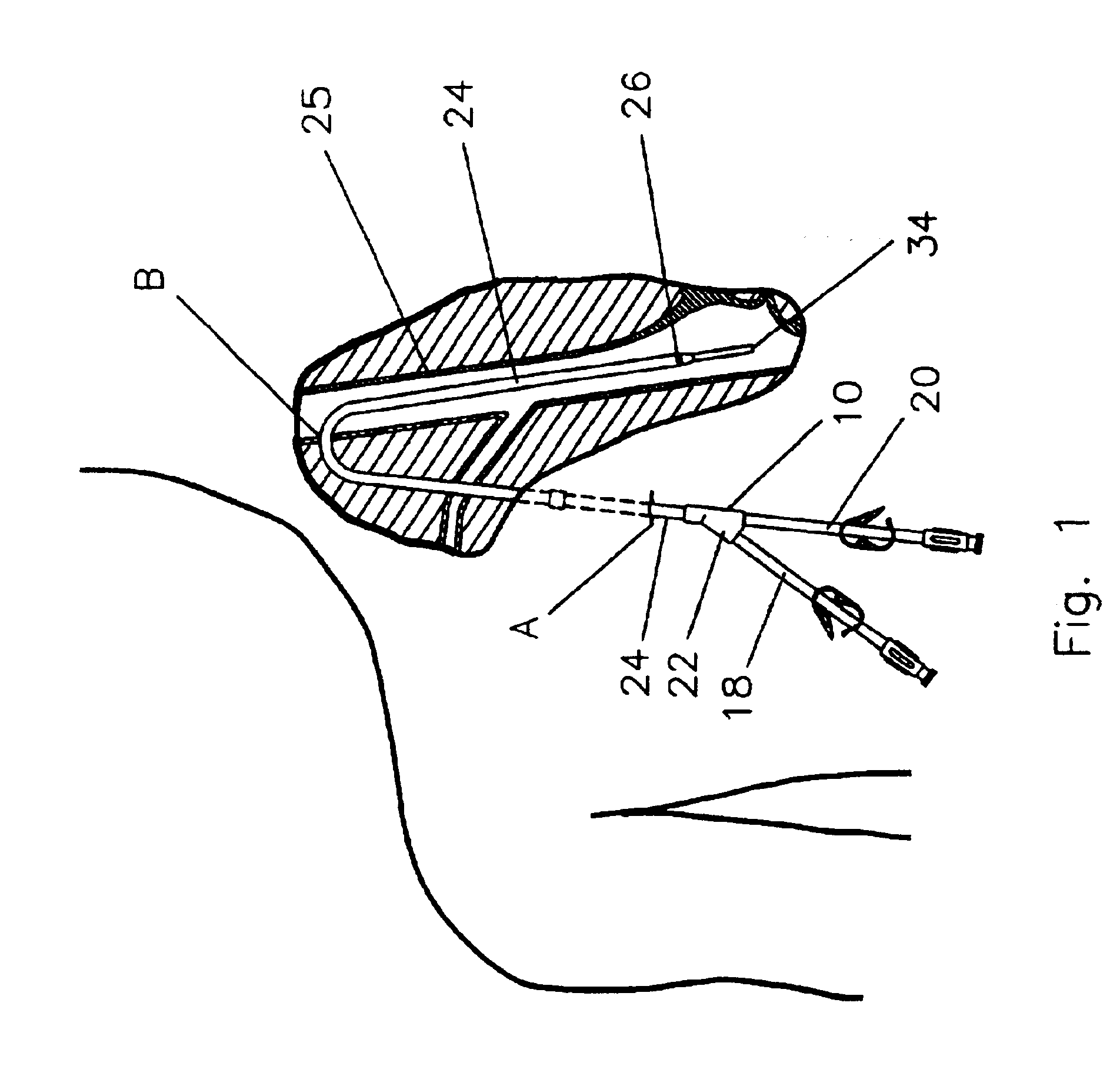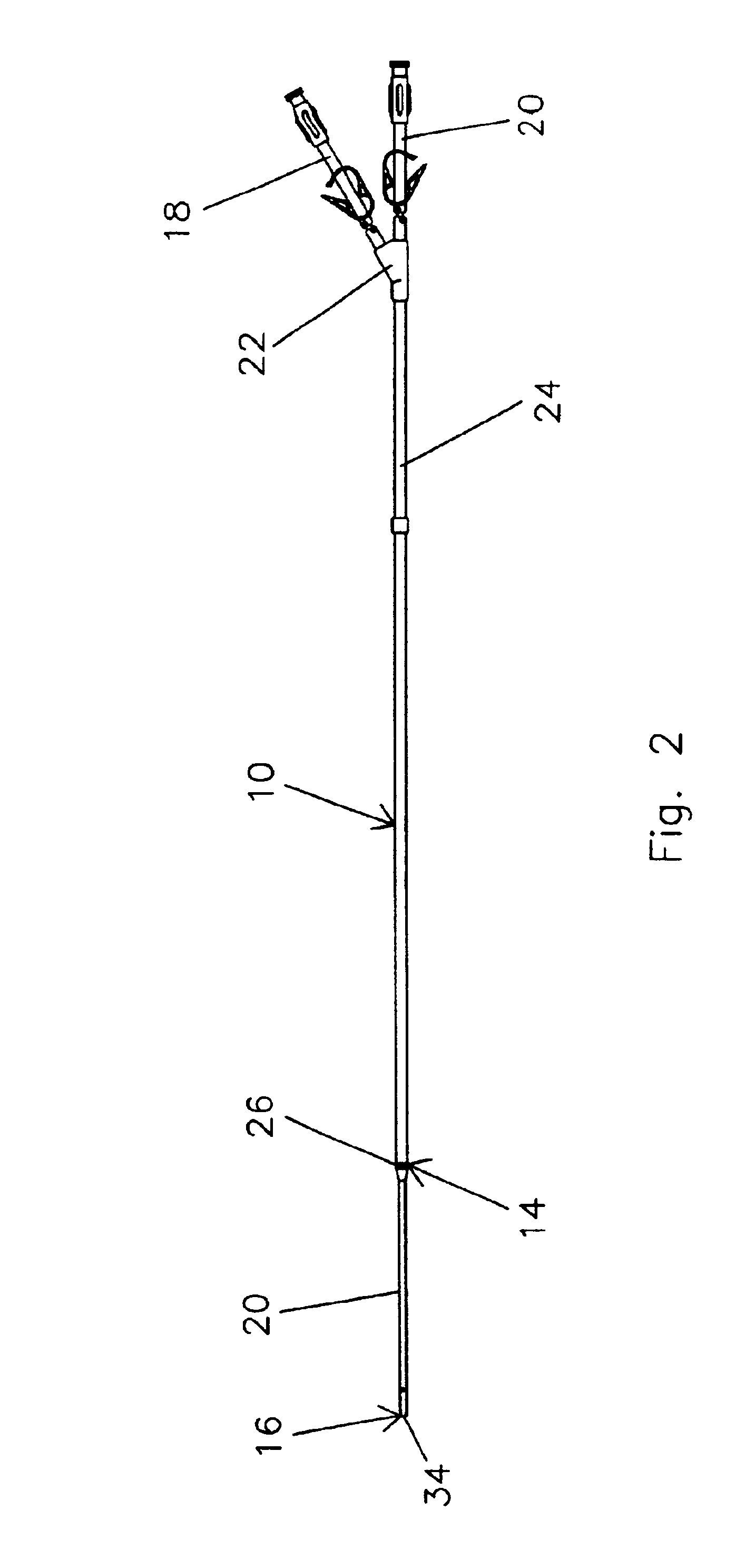Blood treatment catheter and method
a technology for treating catheters and blood, applied in the direction of multi-lumen catheters, catheters, other medical devices, etc., can solve the problem of essentially useless catheters, and achieve the effect of preventing occlusion buildup
- Summary
- Abstract
- Description
- Claims
- Application Information
AI Technical Summary
Benefits of technology
Problems solved by technology
Method used
Image
Examples
Embodiment Construction
[0027]The catheter 10 of this invention has an infusion lumen 11 and an aspirating lumen 12. The distal end 16 of the aspirating lumen extends distally beyond the distal end 14 of the infusion lumen 11.
[0028]More particularly with respect to FIGS. 1 and 2, a standard infusion tube 18 and aspirating tube 20 are combined at a juncture 22 to provide a single tube 24 distal of the juncture 22. The tube 24 contains infusion and aspirating lumens. The tube 24 is inserted into a patient at point A and passed into the jugular vein 25 at point B to be positioned at a desired location; often in the right atrium 38 as shown in FIG. 10.
[0029]FIGS. 3 and 4 illustrate a presently preferred embodiment of this invention in which the infusion port set 26 is constituted by ten ports 26a each having a major axis at an angle of approximately 45° to a circumferential line through the ports 26a. In this embodiment, each of the ports is approximately 50 mils (0.050 inches) by 20 mils (0.020 inches). These...
PUM
 Login to View More
Login to View More Abstract
Description
Claims
Application Information
 Login to View More
Login to View More - R&D
- Intellectual Property
- Life Sciences
- Materials
- Tech Scout
- Unparalleled Data Quality
- Higher Quality Content
- 60% Fewer Hallucinations
Browse by: Latest US Patents, China's latest patents, Technical Efficacy Thesaurus, Application Domain, Technology Topic, Popular Technical Reports.
© 2025 PatSnap. All rights reserved.Legal|Privacy policy|Modern Slavery Act Transparency Statement|Sitemap|About US| Contact US: help@patsnap.com



